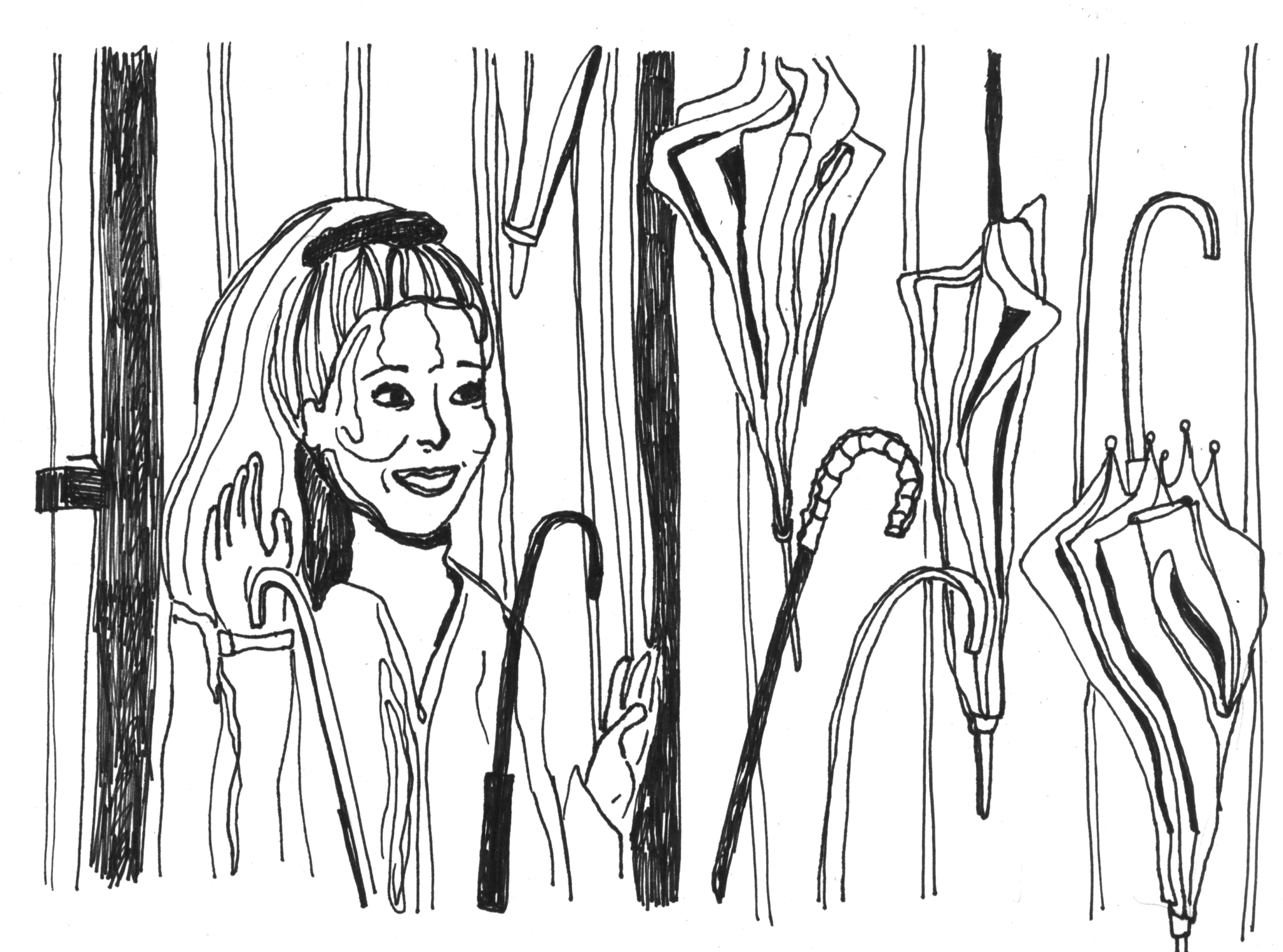
Sammy Westfall
Breathing a tragically innocent air of hope into a story that fixates on reality, “The Umbrellas of Cherbourg” follows a young woman, Geneviève, and her fateful pursuit of romance in the small town of Cherbourg. The film opens with, fittingly, a shower of rain complete with an all-too-well-rehearsed sequence of umbrella carriers. An auto mechanic, Guy, fixes his last car of the night in a parking garage — longing to see his girlfriend Geneviève whom is four years his junior.
“Do you love her?”
“It could be.”
Guy, played by Nino Castelnuovo, sings to his dying aunt, slipping into a bright colored sweater. He blends into the azure-colored room, unable to stop smiling. It was, afterall, date night. Portrayed by Catherine Deneuve, Geneviève patiently waits outside the opera theatre showing Carmen. Meta, almost reminiscent of Godard’s fourth wall-breaking easter eggs. The two fall into one another’s embrace. Ah, to be young and in love.
Director Jacques Demy takes a magic realist approach in the production of this musical. His auteurist choices in hyper-saturation and extensive color coordination creates this aesthetic that communicates adolescent, unadulterated, hopeful romance — almost as a visual representation of the butterflies in one’s stomach upon being hit by an unfortunate case of love. Demy sets the narrative up with promise, establishing the tone of the film with a montage of the young couple’s date: a visit to the opera, some drinks, maybe a dance, a long romantic stroll down some abandoned train tracks — you know, just your run-of-the-mill casual date. And much like the ways in which romance heightens senses and hinders judgement, the intense suspension of disbelief — as exhibited in Geneviève and Guy’s slow dolly back to Guy’s apartment — shows the two protagonists indulging in their whirlwind romance through means that quite literally defy gravity.
However, “Umbrellas” sees itself as a film that is concerned with more than just primal attraction. Classism — not to mention idealism — are both explored in the film’s deceivingly simple narrative. Madame Emery, the mother of Geneviève, demonstrates the first instance of this class divide in her instant condemnation of her daughter’s relationship with the auto mechanic. As Madame Emery sits in her impeccably-tailored canary suit and designer hat, she drowns herself in her financial concerns. How French.
Faced with a poor mechanic and wealthy jewelry dealer, Geneviève is presented with a question emblematic of the class struggle prevalent in 1960s France: for love, or for stability? Fate makes her decision for her.
“I got drafted this morning and I will be away for two years.”
Guy and Geneviève’s fateful romance, though otherworldly in its time, is hit with a fateful reality, like two perpendicular lines that intersect, but only once. Reality sets in, along with Geneviève’s pregnancy. While the aforementioned use of colors and immaculate coordination of mise en scene sets up the film as a romantic fairy tale, it also stages a facade — a story too good to be true. The narrative betrays director Demy’s bluff and points towards social obligation and civil responsibility. Presenting realism in a film so aesthetically unreal, Demy adopts a use of mirroring that is presented in conjunction with repetition.
Mirroring, much like Hitchcock’s fascination with the use of doubles, takes up its own spotlight in this film. The formations of three — Geneviève, her mother Madame Emery with diamond dealer soon-to-be-husband Roland Cassard versus Guy and his aunt Aunt Élise with her caretaker soon-to-be-niece-in-law Madeleine — offer a compelling juxtaposition between the two individual narratives. Geneviève marries Roland Cassard in the church where Guy grieves his aunt, both matriarchs reach the end of their journey, both protagonists name their children Francois… the list goes on. The two perpendicular lines move parallel to one another, just as Guy and Geneviève’s families begin to grow.
Colors, while still vibrant, take on a different form. Warm to begin with, the introduction of cool, bright blue tones hint at the two protagonists’ acceptance of reality. It is the way it is. Aggressively eye-catching, the facade that the film’s saturation persists, adding insult to injury as the narrative takes on an almost farcical turn. Once symbols of freedom, self-indulgence, and joy, these same colors become representative of oppression, mocking Geneviève’s decision to marry and suffocating her. It was the ‘right’ thing to do… right?
Demy proceeds to salt the fateful couple’s wound, playing God, if you will. The film comes back full circle in a coincidental meeting at Guy’s gas station, the future they both dreamed of only a few years back. Geneviève sits in the driveway of what could’ve been, the monument of her romance with Guy, with his child, Francois. Guy finishes decorating the station’s Christmas tree with his daughter, Francois. Geneviève makes her way into the station and the two exchange torcherous looks of familiarity, desire, along with a faint flickering flame of passion. Isn’t this what they both wanted? A life of stability.
Paulo Coelho once said: “… and that was true love, a question for which there is no answer.” The possibilities Guy and Geneviève’s future promised questions that simply could not be answered. Was this the way it should be? What could’ve been? Is this truly where it ends? Am I a masochist? To be in love with a film where love goes to die.
To define this film as the precursor to “La La Land” simply doesn’t do it justice.
Neat, upbeat and bittersweet.
Tiffany Ng | t.ng@yale.edu .







